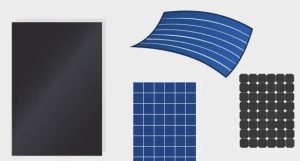Exploring the Definition of a Photovoltaic Cell
In the ever-expanding universe of renewable energy technologies, the photovoltaic (PV) cell emerges as a cornerstone, harnessing the sun's power to generate electricity. This marvel of engineering not only paves the way for cleaner energy but also embodies the intersection of physics, materials science, and environmental stewardship. Let's dive into the intricacies of the photovoltaic cell, unpacking its components, operation, and the pivotal role it plays in our quest for sustainable energy solutions.

The Core Mechanism
At its heart, a photovoltaic cell is a device that converts sunlight directly into electricity through the photovoltaic effect. When photons, or light particles, strike the surface of a PV cell, they excite electrons within the cell's semiconductor material, typically silicon. This excitement creates an electrical current as electrons flow through the material. Modern PV cells achieve conversion efficiencies ranging from 15% to over 22%, a testament to significant advancements in solar technology.
Silicon and Beyond: The Materials of PV Cells
Silicon stands as the predominant material for PV cell construction, prized for its semiconducting properties and abundance. However, the world of photovoltaic cells extends far beyond silicon alone. Innovations have introduced materials like cadmium telluride (CdTe) and copper indium gallium selenide (CIGS), which power thin-film solar cells. These materials offer unique benefits, including flexibility and potential for lower manufacturing costs, pushing the boundaries of where and how photovoltaic technology can be applied.
Types of Photovoltaic Cells
Photovoltaic cells come in several forms, each with distinct characteristics and applications:
- Monocrystalline Silicon Cells: Crafted from single-crystal silicon, these cells are known for their high efficiency and durability. They are easily recognizable by their uniform, dark appearance and rounded edges.
- Polycrystalline Silicon Cells: Made from multiple silicon crystals, polycrystalline cells have a slightly lower efficiency but are more cost-effective to produce. Their blue, speckled look distinguishes them from their monocrystalline counterparts.
- Thin-Film Solar Cells: These cells are manufactured by depositing one or more thin layers of photovoltaic material on a substrate. This category includes materials like CdTe and CIGS, offering versatility in application and the potential for integration into building materials.
A Sustainable Energy Solution
The significance of photovoltaic cells extends far beyond their technical specifications. As a key component of solar panels, PV cells are instrumental in capturing solar energy, a limitless and pollution-free resource. Their deployment across rooftops, in solar farms, and in portable solar devices underscores a global shift towards reducing carbon emissions and combating climate change.
Innovations and Future Directions
The field of photovoltaic technology is ripe with innovation. Research efforts are continuously pushing the envelope on efficiency, seeking new materials that can convert sunlight to electricity more effectively and at lower costs. Perovskite solar cells, for instance, represent a promising area of development, offering the potential for high efficiencies with less expensive materials.
The Bottom Line
Photovoltaic cells stand as pillars of the renewable energy landscape, offering a clean, sustainable alternative to fossil fuels. Their ability to convert sunlight directly into electricity is nothing short of revolutionary, offering hope for a cleaner, greener future. As we explore the photovoltaic cell definition, we not only uncover the mechanics of solar energy conversion but also the potential for photovoltaic technology to reshape our energy systems and reduce our environmental footprint.
